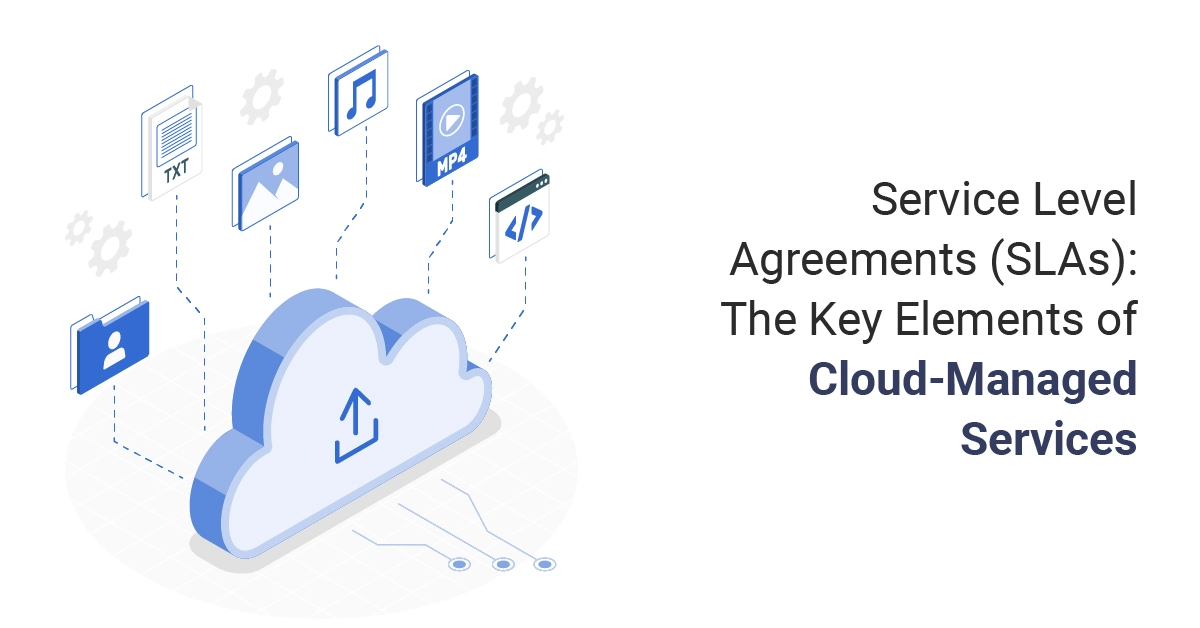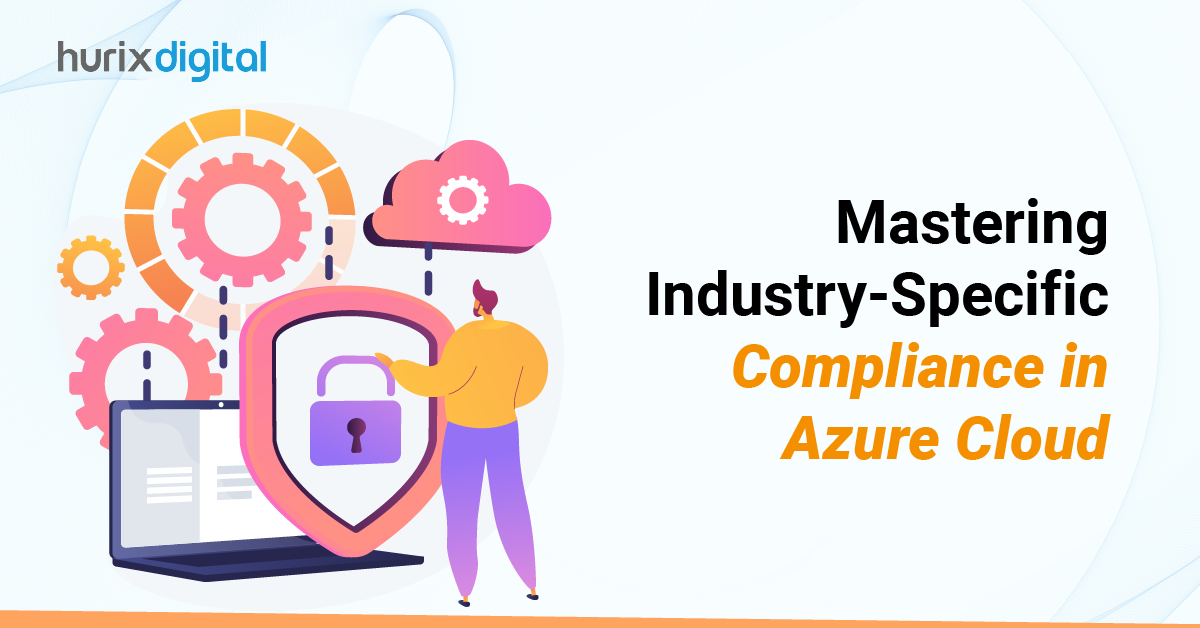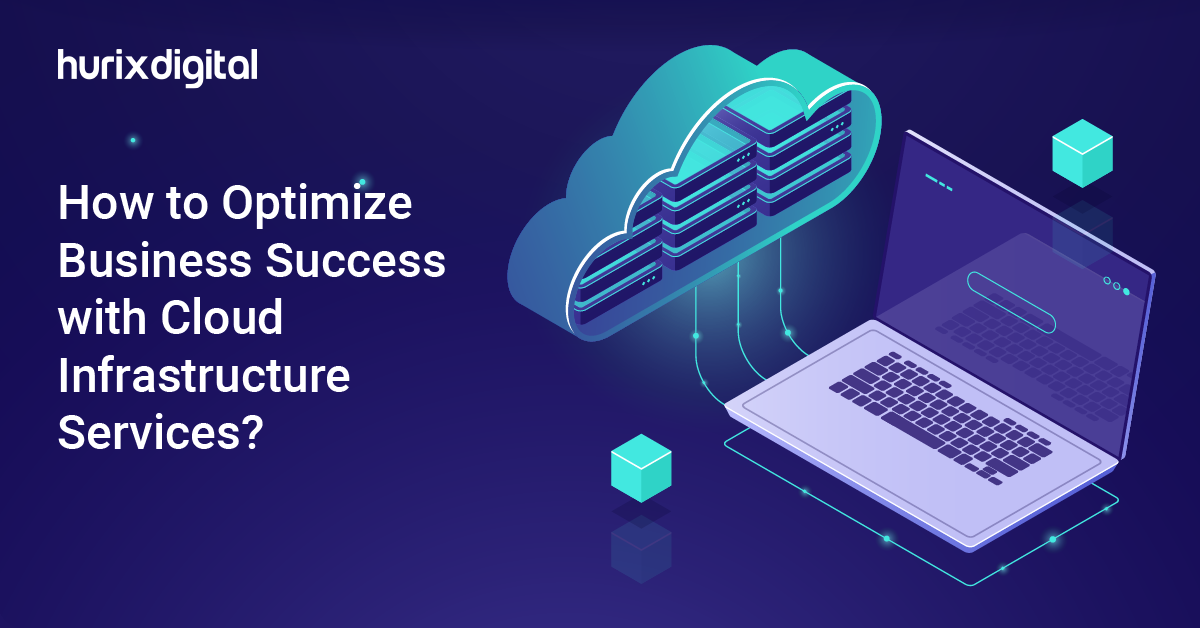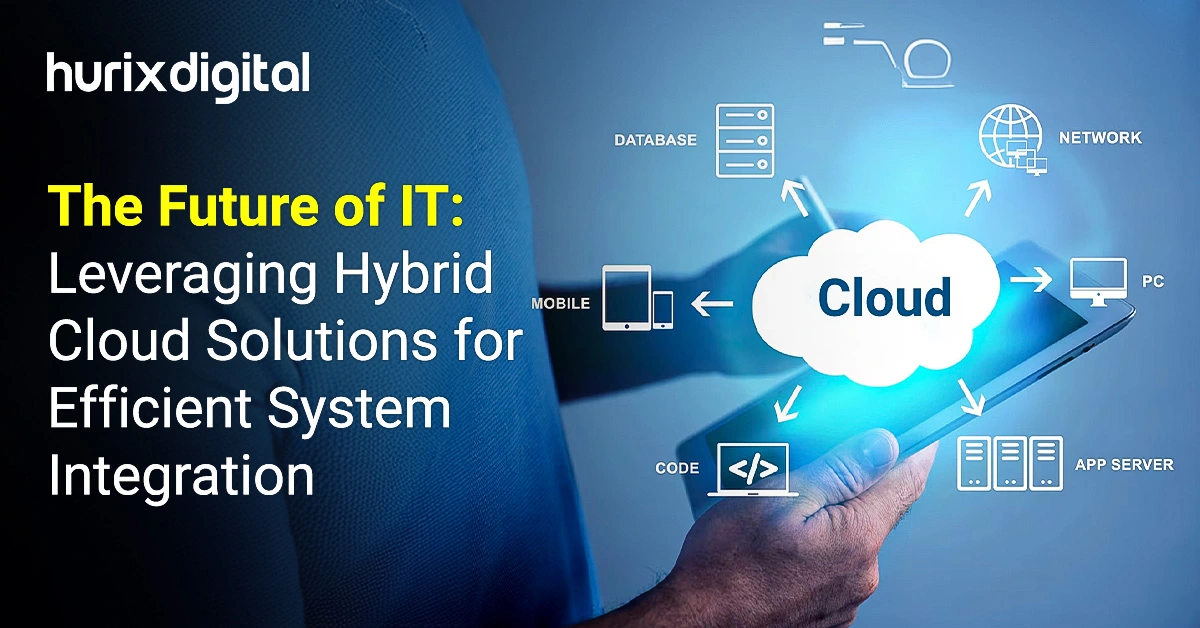
Service Level Agreements (SLAs): The Key Elements of Cloud-Managed Services
Summarize with:
According to a study by Mordor Intelligence, the market for cloud computing will reach $1.44 trillion by 2029. Given this increasing reliance, it is necessary to know the specifics of Service Level Agreements (SLAs) in cloud management contracts.
These contracts outline the duties and rules needed to keep reliable cloud solutions running smoothly. They are the foundation of the interaction between managed cloud service providers and their clients.
In this article, we will discuss service level agreements and what you should look for to ensure that your cloud-managed services contract provides the reliability and performance needed to support your business effectively.
Table of Contents:
- SLAs in Cloud-Managed Services
- Elements to Look for in SLAs
- The Value of Security and Compliance
- Conclusion
SLAs in Cloud-Managed Services
Service Level Agreements (SLAs) describe different aspects of service a cloud service provider needs to offer. They typically go into great detail about factors like reaction time and support availability, which are essential for ensuring that cloud-managed services meet business requirements. The main elements include:
- Service Scope: Specifies which services are included in the agreement.
- Performance Metrics: Include response, resolution, and uptime assurances.
- Responsibilities: Describes the duties of the provider and the client.
- Penalties and Remedies: Describes what happens if the terms of the agreement are not met.
- Reviews and Reporting: Specifies how performance will be monitored and reported.
Also Read: Cloud Infrastructure Services vs. Traditional IT Infrastructure
Elements to Look for in SLAs
Consider these important elements when reviewing a service-level agreement:
1. Service Goals and Scope
The cloud-managed services contract should clearly outline the services it covers. These can vary from straightforward cloud upkeep services to all-inclusive managed cloud solutions that address all aspects of cloud management. By having a clear understanding of the boundaries, businesses can ensure they obtain the services they require and help set reasonable expectations.
Make sure that all of the essential features and apps that your company depends on are included. The SLA should also list any exclusions to prevent further confusion.
For example, the conventional SLA terms may not cover some third-party integrations or legacy systems; these exceptions should be made clear in the documentation.
2. Measures of Performance
Key performance metrics serve as the standard by which the efficacy of cloud-managed services is evaluated. Typical measurements consist of:
- Uptime: The percentage of time services are available.
- Response Time: The time needed to respond to a service request.
- Resolution Time: The time required to solve an issue.
These measurements are essential for evaluating the cloud service provider’s dependability and effectiveness. Companies should search for SLAs that provide comprehensive definitions and measuring techniques in addition to these KPIs.
For example, clearly define the measurement window (monthly or quarterly) and the definition of uptime (e.g., does it include scheduled maintenance?).
3. Accountabilities and Mandates
The SLA outlines the obligations of both the client and the provider. For the supplier, this could entail upkeep of the infrastructure, assistance, and security. The client might be responsible for upholding data integrity, utilizing the services as intended, and promptly reporting problems. It is easier to avoid misunderstandings and guarantee the seamless running of managed cloud services when roles are clearly defined.
The following are typical duties for the provider:
- Ensuring the security and modernity of the infrastructure
- Supplying frequent backups and strategies for catastrophe recovery
- Providing troubleshooting and technical help
- Carrying out routine security and performance checks
The client’s obligations could be as follows:
- Making sure services are paid for on time
- Following the software and data usage rules provided by the provider
- Reporting any problems or violations right away
- Granting the provider the information and access they need to carry out their responsibilities
Having clearly defined duties lowers the possibility of disagreements and promotes cooperation by ensuring that everyone knows their obligations.
4. Sanctions and Compensation
The systems in place to handle any inadequacies in fulfilling the SLA requirements include penalties and remedies. These could be in the form of service credits, monetary fines, or even the option to end the agreement. Businesses must comprehend these clauses to protect their interests and ensure that the cloud service provider will be held accountable.
Making sure that penalties and remedies are enforceable and meaningful is crucial while discussing them. Although they should be significant enough to encourage the provider to adhere to the SLA criteria, service credits are a typical remedy.
Businesses should also think about incorporating escalation protocols and the option to end the agreement early and without penalty if the supplier persistently falls short of the predetermined requirements.
5. Examination and Documentation
Regular reporting and assessment are essential to monitoring the success of cloud-managed services. The frequency and content of performance reports should be outlined in the SLA. Because of this transparency, companies can monitor the success of their services and take proactive measures to resolve any problems.
Performance reports usually include data on uptime, response, and resolution times, as well as any events or breaches that occurred during the reporting period. These reports, which offer practical insights into the functioning of managed cloud services, ought to be concise and simple to read.
6. Customization and Flexibility
Search out SLAs that provide flexibility and customization so you can adjust the terms and meet your unique needs. This could entail scalable solutions that can expand with your company, customized service bundles, or modifiable performance indicators.
Possible customization choices include:
- Service Tiers: Distinct service tiers with differing performance and support promises.
- Add-on Services: Extra services, such as specialized support teams or sophisticated security capabilities, can be added as needed.
- Scalability: The ability to quickly scale up or down services in response to business requirements.
The Value of Security and Compliance
According to a 2022 report by Snyk, 80% of companies had dealt with a cloud security event within the last year. With this in mind, the SLA needs to include thorough provisions describing how the cloud service provider handles regulatory compliance and data protection. This can entail implementing elements like encrypting data, conducting regular security audits, and adhering to laws like HIPAA.
Security clauses need to address the following:
- Data Protection: Techniques for encrypting information while it’s in motion and at rest
- Access Control: Taking steps to guarantee that only individuals with permission can access private information.
- Incident Response Procedures: Protocols for reacting to and mitigating data security risks.
- Compliance Audits: Regular audits to verify adherence to industry norms and laws.
Read Success Story: Hurix Digital Modernizes IT Systems for a Food Manufacturing Giant
Conclusion
You can maximize the benefits of managed cloud solutions by understanding the essential elements of SLAs and ensuring that cloud services meet your expectations. Place a strong emphasis on transparent performance measurements, security measures, and flexible terms.
Hurix Digital focuses on making online platforms that everyone can use. Our team of experts focuses on using cloud services that make the web more accessible and give users an inclusive user experience.
Get in touch with us right away to find out how cloud services enhance your business.
Summarize with:

Vice President and Strategic Business Unit Head – Cloud Services
A top technology management voice on LinkedIn with 20 Years of experience in Information Technology, Cloud Services, Digital Transformation, Application Modernization, Managed Services, IT Security Engineering and Operations Management. An avid technology Leader, Leadership Speaker, Author & Coach.
 A Space for Thoughtful
A Space for Thoughtful 



